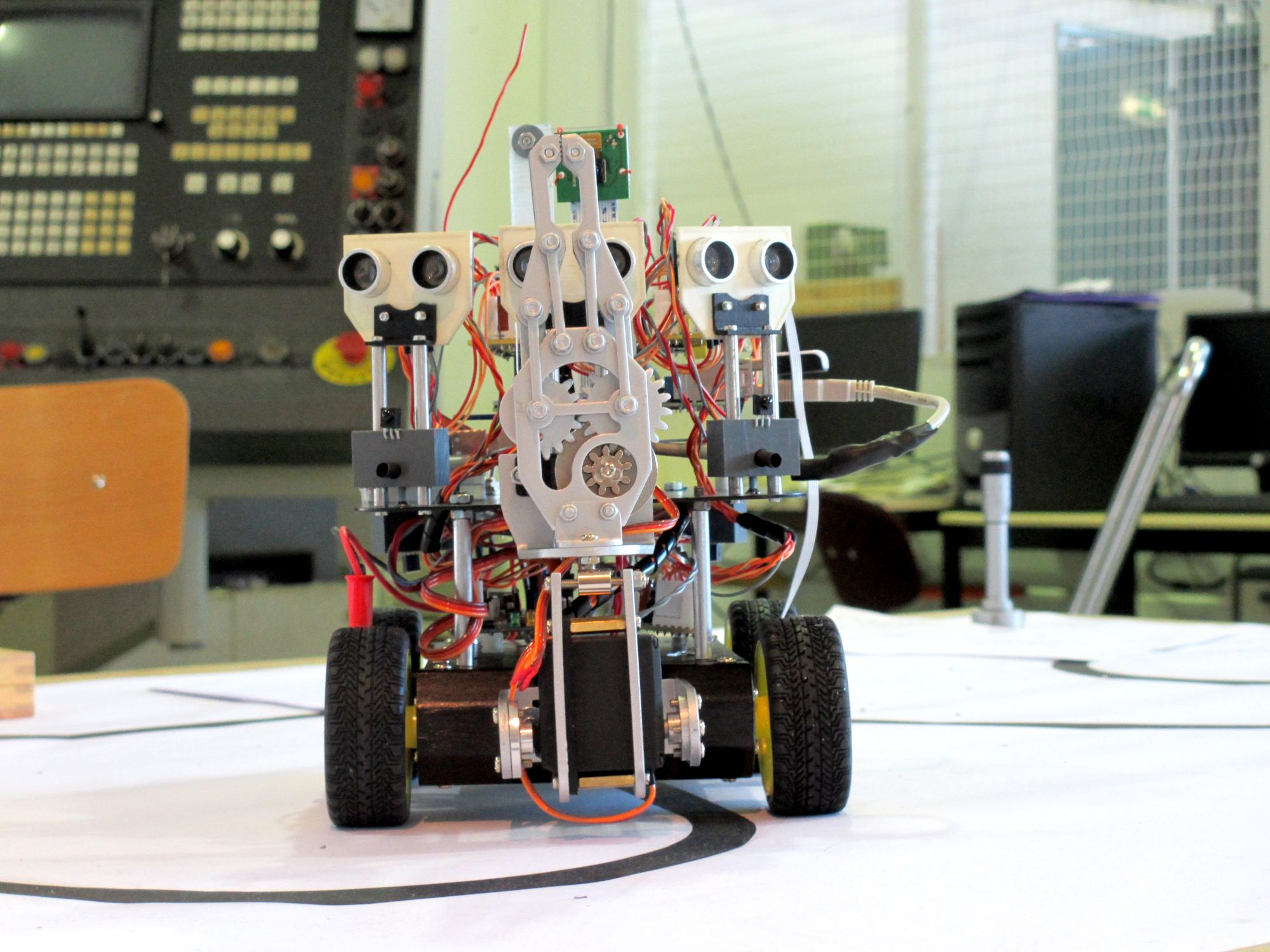What is mechatronics?
Intelligent products can perceive their environment, communicate, process information and act accordingly… Is this science fiction? No, it’s mechatronics! Every day, we come in contact with mechatronic systems, from reflex cameras to our cars’ braking systems. Beyond the technical characteristics of these devices, the term mechatronics also refers to the systemic and comprehensive nature of their design. Pierre Couturier, a researcher at IMT Mines Alès, answers our questions about the development of these complex multi-technology systems.
What is mechatronics?
Mechatronics is an interdisciplinary and collaborative approach for designing and producing multi-technology products. To design a mechatronic product, several different professions must work together to simultaneously solve electronic, IT and mechanical problems.
In addition, designing a mechatronic product means adopting a systemic approach and taking into account stakeholders’ needs for the product over its entire lifecycle, from design, creation, production, use, to dismantling. The issues of recycling and disposing of the materials are also considered during the earliest stages of the design phase. Mechatronics brings very different professions together and this systemic vision creates a consensus among all the specialists involved.
What are the characteristics of a mechatronic product?
A mechatronic product can perceive its environment using sensors, process the information received and then communicate and react accordingly in or on this environment. Developing such capacities requires the integration of several technologies in synergy: mechanics, electronics, IT and automation. Ideally, a product is designed to self-run and self-correct based on how it is used. With this goal in mind, we use artificial intelligence technologies and different types of learning: supervised, non-supervised or reinforced learning.
What types of applications are mechatronic products used for?
Mechatronic products are used in many different fields: transport, mobility, robotics, industrial equipment, machine-tools, as well as in applications for the general public… Reflex cameras, which integrate mechanical aspects with mobile parts are one example of mechatronic products.
In the area of transport, we also encounter mechatronics on a daily basis, for example with the ABS braking assistance system that is integrated into most cars. This system detects when the wheels are slipping and releases the driver’s braking request to restore the wheel’s grip on the road.
At IMT Mines Alès, we are also conducting several mechatronic projects on health and disability, including a motorized wheel for an all-terrain wheelchair. The principle is to provide the wheelchair with electrical assistance proportional to how the individual pushes on the handrail.
What other types of health projects are you leading at IMT Mines Alès?
In the health sector, we have developed a device for measuring the pressure a shoe exerts on the foot for an orthopedic company from Lozère. This product is intended for individuals with diabetes who have a loss of sensation in their feet: they can sometimes injure themselves by wearing inappropriate shoes without feeling any pain. Using socks equipped with sensors placed at specific places, areas with excessive pressure can be identified. The data is then sent to a remote station which transfers the different pressure points to a 3D model. We can therefore infer what corrections need to be made to the shoe to ensure the individual’s comfort.
We have also developed a scooter for people with disabilities, featuring a retractable kickstand that is activated when the vehicle runs at a low speed, to prevent the rider from falling. Also, in the area of disability, we have worked on a system of controls for electric wheelchairs that involve both a touchpad with two pressure areas to move forward and backward and touch sensors activated by the head to move left or right.
What difficulties are sometimes encountered when developing complex mechatronic products?
The first difficulty is to get all the different professions to work together to design a product. There are real human aspects to manage! The second technical difficulty is caused by the physical interactions between the product’s different components, which are not always predictable. At IMT Mines Alès, for example, we designed a machine for testing the resistance of a foam mattress. A roller moved across the entire length of the mattress to wear it out. However, the interaction between the foam and roller produced electrostatic phenomena that led to electric shocks. We had underestimated their significance… We therefore had to change the roller material to resolve this problem. Due to the complexity of these systems, we discovered physical interactions we had not expected during the design phase!
To avoid this type of problem, we conduct research in systems engineering to assess, verify and validate the principles behind the solution as soon as possible in the design phase, even before physically making any of the product’s components. The ideal solution would be to design a product using digital modeling and simulation, and then produce it without the prototype phase… But that’s not yet possible! In reality, due to the increasing complexity of mechatronic products, it is still necessary to develop a prototype to detect properties or behaviors that are difficult to assess through simulation.




Leave a Reply
Want to join the discussion?Feel free to contribute!